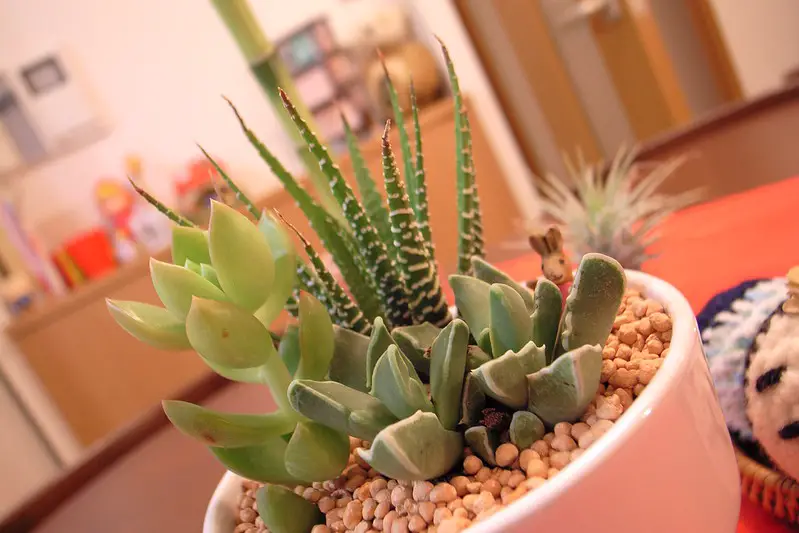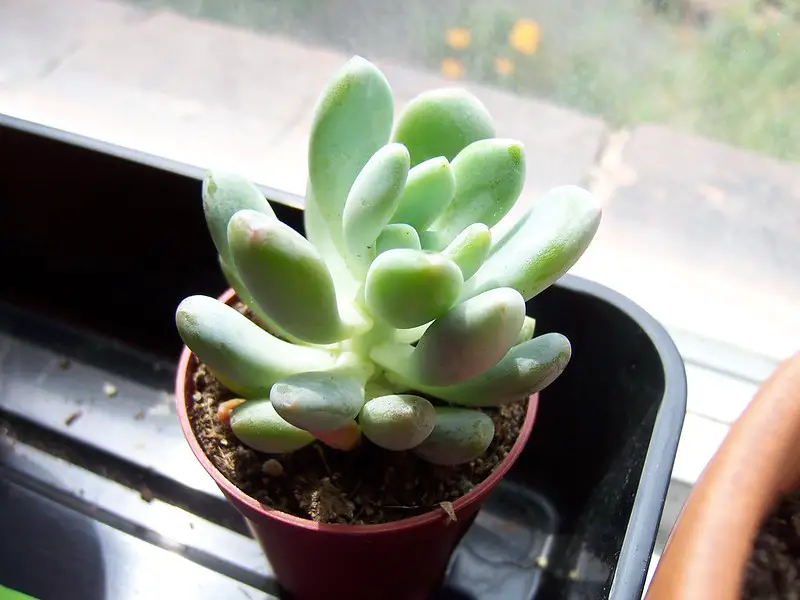We use affiliate links to run our site. When you buy through links on our site, we may earn an affiliate commission, without any added cost to you. Learn more
What Soil is Good for Succulents?
For growing succulents, you can not use your regular garden soil or potting mix. If you do this, they will rot. You need special soil for growing succulents.
A succulent soil has some unique features of its own. The best potting soil for succulents should
- capable to support the plant physically,
- holds little moisture and nutrients, and
- be able to drain excess water (especially during rain seasons) perfectly.
Is Clay Good for Succulents:
Among the various types soil, clay can support the plant physically and also provide succulents nutrition as they possess quite a bit of nutrient in them. Unfortunately, clay retains a lot of water and has terrible drainage. Clay is also incredibly dense and compaction restrict airflow.
Sand, perlite, pumice or bark, on the other hand, have excellent drainage but as they don’t have many nutrients in them, growing succulents in any of these mediums solely are not possible.
So the best solution for growing succulents is to combine clay and other materials in such a ratio so that all the purposes of succulent soil can be met.
You can also totally avoid soil and opt for a soilless succulent mix.
Is Loamy Soil Good for Succulents:
Loamy soil has lots of organic matter in them. Most indoor plants love this type of soil because the loam gives them the bulk of the nutrients and holds moisture quite well.
Now, this makes loamy soil not suitable for succulents because succulents don’t do well in prolonged wet conditions. All though all plants are susceptible to root rot, succulents are the worst.
Peat Moss for Succulents:
In most succulent mixes people use peat moss as the main base. The problem with peat moss is that it is hard to wet and also dries out quickly. One of the best remedies for this is to add ground bark, it will help water to penetrate more easily.
A great alternative for peat moss is coco coir. The fibrous nature of the coir helps the water to easily sink in. And you can also wet it very easily once it dries out.
Planting Succulents in Coco Coir:
Though coco coir is a good choice for growing normal plants, for growing succulents it can be tricky.
As coir is light and stores a lot of moisture, planting succulents in an outdoor hot climate can be a good choice. For growing succulents indoors you have to improve the drainage of the coir, otherwise the root might rot.
Add coarse sand or horticulture perlite with coco coir in a 1:2 ratio before planting succulents. This will solve the problem.

Vermiculite for Growing Succulents:
Vermiculite is a natural mineral that looks more like small brown flakes. Vermiculite is not suitable for growing succulents as it absorbs and retain moisture and actually can be very harmful to succulents.
Don’t confuse it with perlite. Perlite is white and doesn’t retain much water.
How Much Soil is Needed for Planting Succulents:
While growing succulents in containers, the pot as well as the growing soil should allow the roots to grow and also support the succulent to remain anchored. Ideally, a container no more than 2-3 inches bigger than the root ball of a plant is enough.
How Long Can Succulents Live Without Soil:
Succulents can survive without soil but not for long. Growing succulents on rock, pebbles, or sand might work for a short term fun project, but to make them thrive you have to give them soil or a quality soilless mix.
Soilless Mix for Succulents:
You can easily make your own succulent soil. Homemade succulent soil has two major benefits over store-bought soil.
When you make your own soil you can control the ingredients. As succulents differ in their nature you can easily fine-tune the soil to suit their needs. This kind of flexibility you won’t get in store-bought soil.
Secondly, homemade succulent soil is cheaper than commercial succulent soil. This especially helps when you have a lot of succulents in your house.
How to Prepare Soil for Succulents:
The easiest way to make your customized succulent soilless mix is to add 3 main ingredients:
- Regular potting soil
- Perlite /pumice
- Coarse sand
Regular potting soil includes any potting soil that you are currently using to grow any indoor plant. If you currently don’t have any you can buy them from nursery stores or online.
Perlite is a very lightweight material. It will help in preventing any soil compaction and increased drainage. Perlite and pumice are generally available at any local nursery stores. If you are having trouble getting it you can alternatively use online stores to buy perlite or pumice.
Sand works great with succulents. But while buying remember it is the coarse sand that you should use. Don’t just use any sand from the garden or beach, they can contain harmful pathogens.
Succulent Soil Recipe:
Now add 3 parts of potting soil with 2 parts of coarse sand and 1 part of perlite or pumice in a container and mix it thoroughly. And now your succulent soilless mix is ready to use.
Can You Use Cactus Soil for Succulents:
you can use cactus soil for growing succulents with a little amendment. Buy a good cactus soil and add sand and perlite with the soil. It will improve the drainage of the soil and will prevent soil compacting for a longer time.
You can also use an African violet mix in place of cactus soil.
How to Pot The Succulent:
Once you have got your desired succulent from a nursery its time to re-pot it in your desired container. Following are some of the steps you need to take to complete your succulent potting:
- First, get rid of the nursery pot and remove as much soil as you can. The more you can remove, the healthier your succulent’s roots will be.
- Put some mesh screens on top of the drainage hole. This will stop soil from falling out.
- Now fill your pot with your succulent soil that you have just made. Fill it almost (but not exactly) to the top. Leave a little space at the top, so the plant can fit comfortably.
- Now place your succulent at the center of the pot.
- Finally, fill up the top of the pot.
- Additionally, you can add some top dressing. This step is optional.
Once you have a great soil mix, you not only give your plants all the necessary nutrients and anchorage to thrive but help to prevent root rot.
I hope this article has helped you prepare your succulents. You can find more article on growing succulent here.
Don’t Forget to PIN IT

Amazon and the Amazon logo are trademarks of Amazon.com, Inc, or its affiliates.

Hi there! My name is Prasenjit and I’m an avid gardener and someone who has grown a passion for growing plants. From my hands-on experience, I have learned what works and what doesn’t. Here I share everything I have learned.
